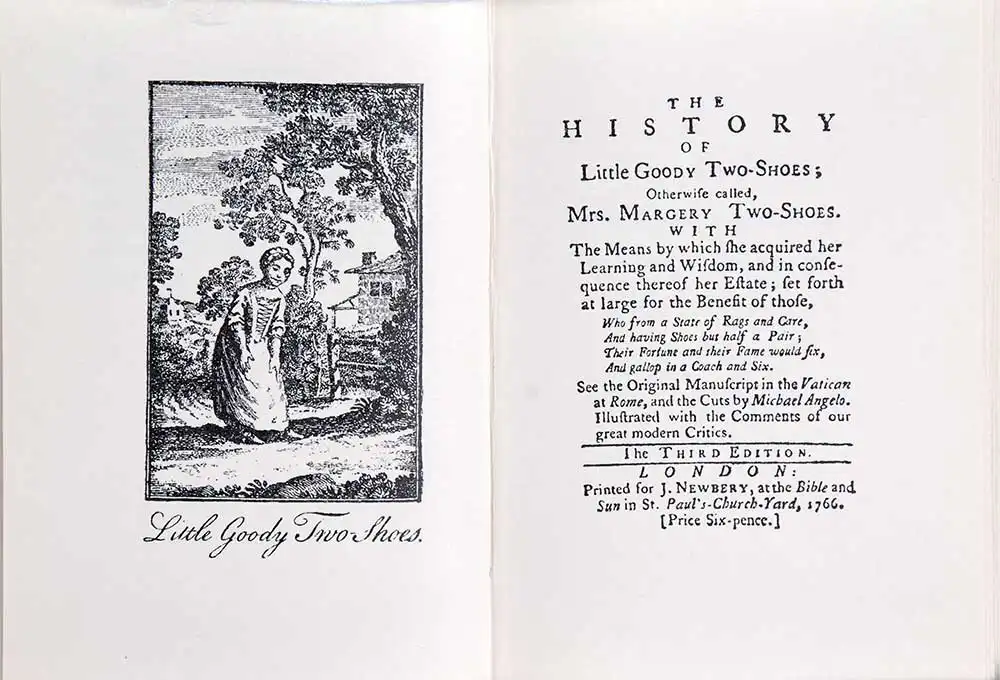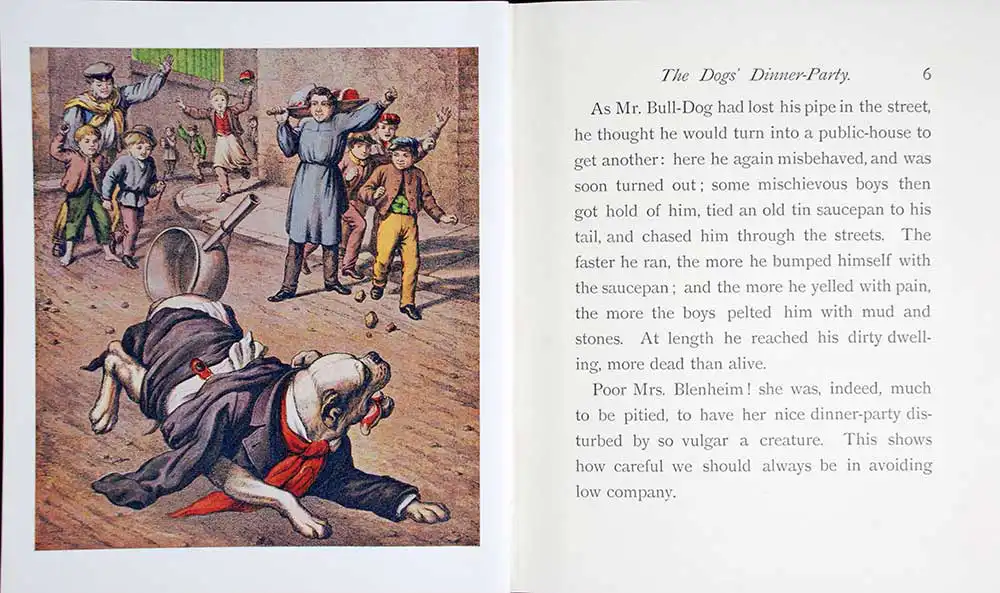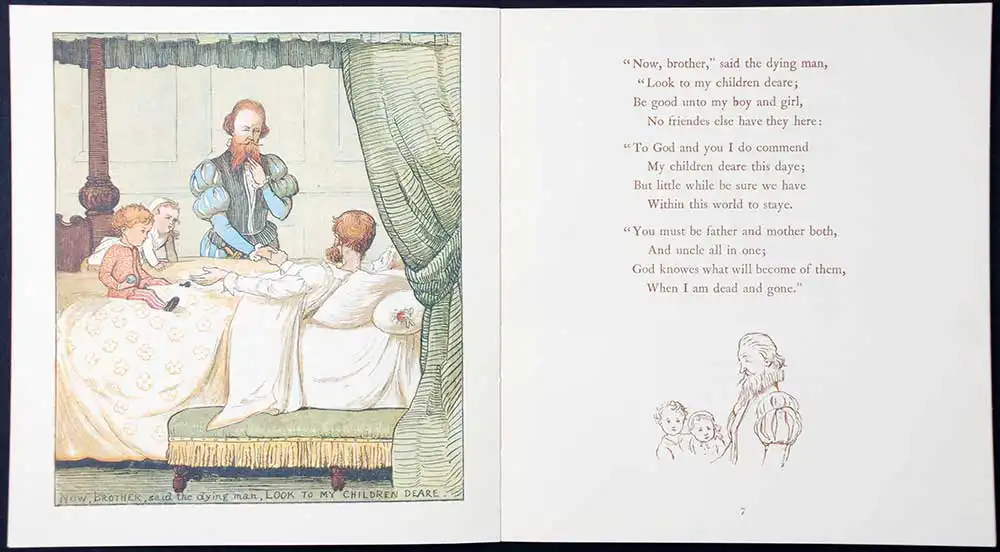Case 12
- Moral Stories

Goody Two-Shoes: a facsimile reproduction of the edition of 1766. London: The Bodley Head, 1981.
The
Osborne Collection of Early Children’s Books is a series of facsimile editions
issued by The Bodley Head, London in 1981, containing a number of traditional
English didactic or ‘moral stories’.
Goody Two-Shoes is one such moral tale in which
an orphan girl grows up to become a wise and virtuous school mistress. It was
first published in 1765 by John Newbury, a benevolent bookseller and publisher
who imbued his children’s books with a sense of fun. One of the earliest pieces
of English fiction deliberately directed to the amusement of children, it
featured simple woodcuts and was bound in Dutch flower paper boards of
variegated colours for young children to hold. About 200 editions of this story
were published in the next 200 years.

Goody Two-Shoes: a facsimile reproduction of the edition of 1766. London: The Bodley Head, 1981.
Open image in new window

The dog's dinner party. London: The Bodley Head, 1981.
Published
by George Routledge and Sons (ca. 1870), The
dog’s dinner party is an example of a ‘toy book’, which became popular early
in Queen Victoria’s reign and placed a much greater emphasis on illustration.
Designed for younger children, they were large coloured books with a simple
story. Designed principally for amusement, the aura of the moral tale
nevertheless remained – as in this story which concludes with the admonition:
“This shows how careful we should always be in avoiding low company.”

Randolph Caldecott. The babes in the wood. London: The Bodley Head, 1981.
Randolph
Caldecott’s The babes in the wood
(1879) rewrites in rhyme the traditional popular ballad first recorded in the
Stationers’ Register in 1593. It tells the tale of two young children abandoned
in the wood who die and are covered in leaves by robins. Early broadside
versions of this ballad were stern morality tales emphasising the divine
retribution against the wicked uncle who neglects his familial duty. Caldecott
however possessed an instinctive grasp of a child’s delight and his vividly
illustrated version downplayed the element of grim retribution.


